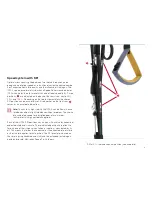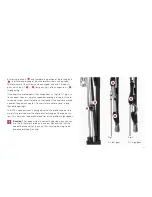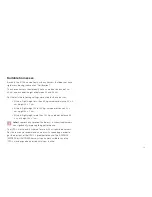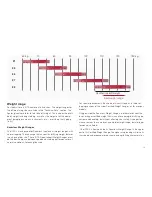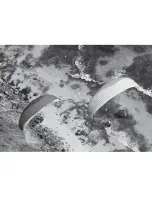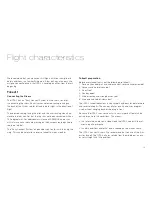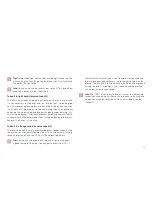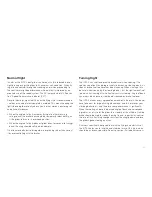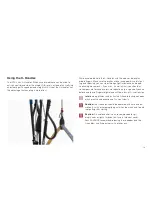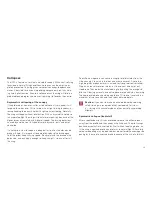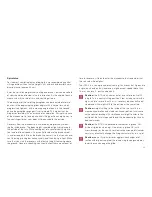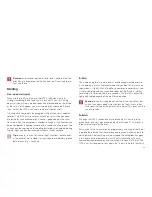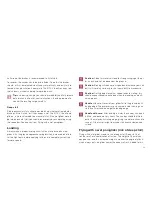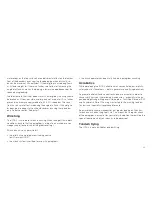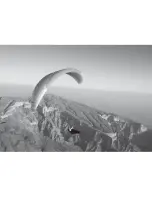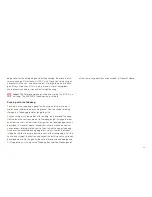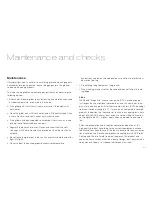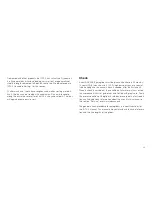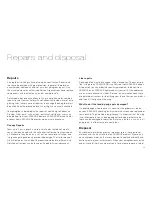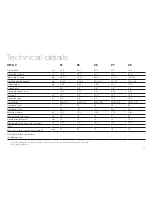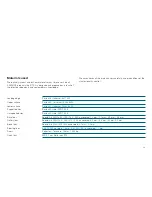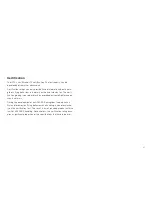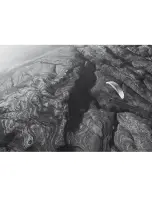
Caution:
after recovering from a spiral dive it could be that the
pilot flies into turbulence that he has caused . Fly actively to pre-
vent a collapse .
Stalling
One-sided stall (spin)
When circling tightly in a thermal the IOTA 2 indicates clearly, by
strongly increasing brake load, the risk of a stall . Even so, if a wing
does stall you will feel a marked reduction of brake load on the inside
of the turn . If this happens you must immediately release both brake
lines, so that the IOTA 2 can return to normal flight by itself .
If a wing stalls completely the paraglider will go into a spin / negative
rotation . The IOTA 2 will react dynamically, but will still be managea-
ble by the less experienced pilot . Even so – depending on the situa-
tion from which the paraglider is allowed to fly again – the reaction can
be quite vigorous ( shooting forward with a raised risk of collapse ) . The
canopy can be arrested while shooting forward by well-judged braking .
Normal flight can then be resumed without a further collapse .
Tip:
basically, in all out-of-control flight situations, but especial-
ly the onset of a one-sided stall, you should immediately release
both brakes fully – hands up .
B-Stall
The whole paraglider structure and its profile shape would be severe-
ly strained by a B-stall . We recommend that you don’t fly B-stalls on a
regular basis . If the B-Stall is to be flown however, recovery must con-
sist of a complete and hesitation-free release of the B-risers, so that
normal flight is resumed within two seconds . The B-stall is difficult for
light pilots to do because of the high force required .
Caution:
when B-stalling do not pull the B-riser quicklinks low-
er than the upper speed system pulleys on the A-risers, other-
wise you will also pull the outer A-risers down! This gives you the
risk of a rosette .
Fullstall
Although the IOTA 2 responds early to brake input it has very long
brake travel, and very high brake load at the stall point . This means a
large safety margin for the pilot .
Entry into a fullstall is achieved by progressively and symmetrically pull-
ing down both brake lines . Forward speed reduces . Airflow and wind
noise reduce . After reaching minimum speed the paraglider first goes
into a brief phase of parachutal stall . Then further brake will cause
complete airflow breakaway, and the wing will fall back in fullstall . The
IOTA 2 has a strong desire to fly again, but is easy to hold in the stall . A
23
Summary of Contents for IOTA2
Page 1: ...Edition 1 12_2017 Manual...
Page 2: ......
Page 14: ...14...
Page 26: ...26...
Page 27: ...27...
Page 28: ...28...
Page 34: ...parts and dispose of the lines canopy and risers in a waste incinera tion plant 34...
Page 38: ...38...
Page 41: ...Wing parts Winglet Upper surface Cleaning velcro Ribs Lower surface Air inlets Cells 41...
Page 44: ...Bowline 44...

